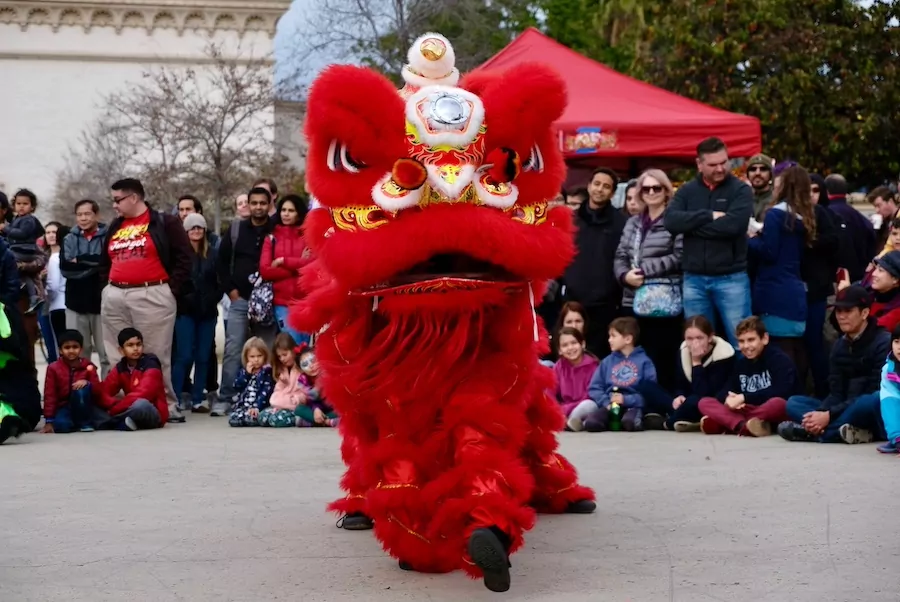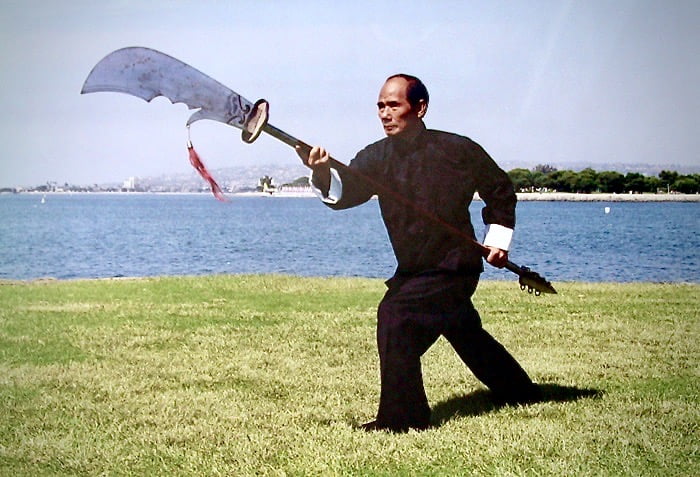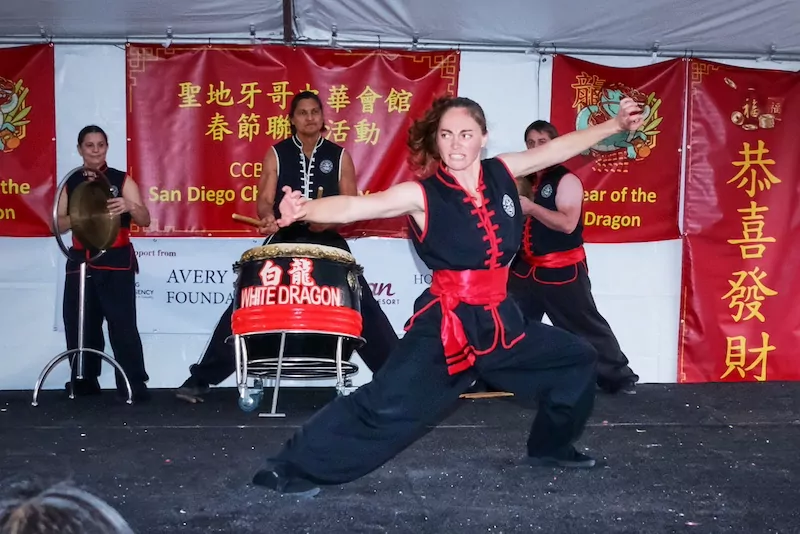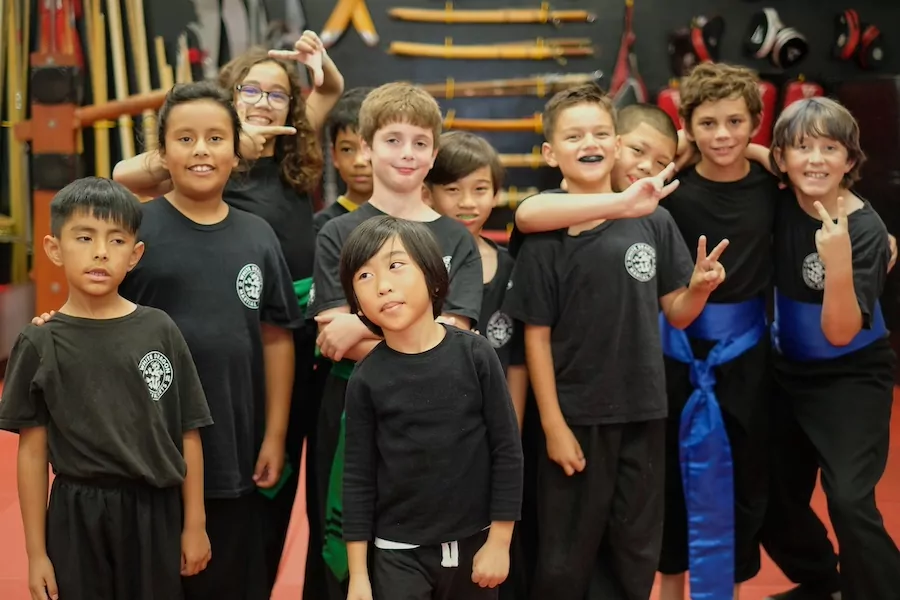The White Dragon School Blog

Five Fierce Facts About the Lion Dance
The Lunar New Year is a venerated holiday in many Asian cultures like Korea, Malaysia, Singapore, and Vietnam, just to name a few. Although each country has its own collection of unique customs and festivities, when it comes to Lunar New Year, most people in the West think of the Chinese New Year.
In China, the Lunar New Year is the most significant holiday in the yearly calendar. Also known as the Spring Festival, Chinese New Year marks the beginning of the annual lunisolar cycle. Commencing with the new moon and culminating two weeks later with the full moon and Lantern Festival, Chinese New Year is an immensely jubilant time!
The Chinese New Year period is a time for families to gather together in celebration and remembrance. It’s a time to pay respect to relatives present and long past. Homes are carefully swept and then adorned with banners and red lanterns. A special feast with an assortment of tasty foods is prepared, and there’s an exchange of lucky red envelopes. However, the most illustrious part of Chinese New Year is the festival of music, firecrackers, and the lion dance.
Here are five interesting facts about lion dancing that you might not know:
1. The History
One legend of lion dancing’s origin dates back 1500 years to the Tang dynasty. The myth tells of an emperor who had a dream one night in which a strange looking animal saved his life. The next morning, the emperor described the dream to his ministers and one minister told the emperor that the strange animal resembled a creature from the West, a lion. The lion quickly became a symbol of good luck, and is used today in all kinds of distinctive occasions to usher in prosperity and auspicious fortune.
2. Construction
Because lions are not native to China, the “lion” in the dance acquired characteristics of the Chinese dragon and phoenix. This creates a unique looking animal. The lion heads are handmade of bamboo and paper mache and can be painted in a variety of different colors. They can be adorned with either horsehair, rabbit, or sheep’s fur. Lion heads can weigh up to 10 pounds and the matching tail can be up to 20 feet long!
3. Lion Dancing & Kung Fu
Lion dancing is not only an important tradition in Chinese culture, it has a strong connection with kung fu training. Originally, lion dancing was only performed by the highest level students in the kung fu school. That’s because a strong foundation and solid stances are needed to perform the difficult and sometimes acrobatic feats. Choy Li Fut Kung Fu practitioners have been using lion dancing to improve their leg strength, flexibility, and stamina since the style’s creation in 1836. Even today, lion dancing is one of the best forms of “kung fu cross training.”
4. Lion Dancing Styles
Lion dancing in China can be divided into Northern and Southern styles. Furthermore, Southern style lion dancing could be divided into Hoksan style and Foshan style. At White Dragon, we practice Foshan style lion dancing which is most often associated with Southern kung fu systems. Foshan style lion dancing is known for its use of traditional kung fu stances, powerful explosive movements, expressive gestures, and energetic drumming.
5. The Lucky Red Envelopes
Feeding the lion with a red envelope during a performance brings good luck and prosperity for the upcoming year. The envelope always contains a monetary gift that is given during holidays and special occasions to promote health, wealth, and favorable fortune. In Cantonese the red envelope is called “lai see” and in Mandarin it is called “hung bao.” Lion dance teams use the lucky money from the red envelopes to support the upkeep of the lions since they are always in need of repair.
6. Bonus Fact! Getting the Greens
It might surprise most people to know that not only is lion dancing steeped in ritual, its routines are often ceremonial in nature. One of the most famous of all the lion dance routines is “getting the greens” or “choi chang.” In this custom, a head of lettuce containing a monetary gift is hung high in a doorway or attached to the outside of a building. As the lion cautiously approaches the lettuce, the dancers will oftentimes have to perform a difficult athletic feat such as standing on the shoulders or jumping through the air to reach the lettuce. This display of perfect balance, superb strength, and teamwork, is always the highlight of the performance! After successfully grabbing the lettuce, the lion consumes it, and then spits it out as a symbol of spreading good luck and prosperity to the benefit of everyone in attendance.
From its mythical origins to its martial arts connection, lion dancing is as popular today as ever before. It continues to be a staple practice in a traditional kung fu school. Once reserved only for the highest level practitioners, today it’s taught to any and all students who show interest in this amazing cultural art form.



















2 Comments
Very interesting and informative read. Thanks for sharing the knowledge!
Thank you for the lion dance knowledge! Now I know why White Dragon is the best at lion dancing!